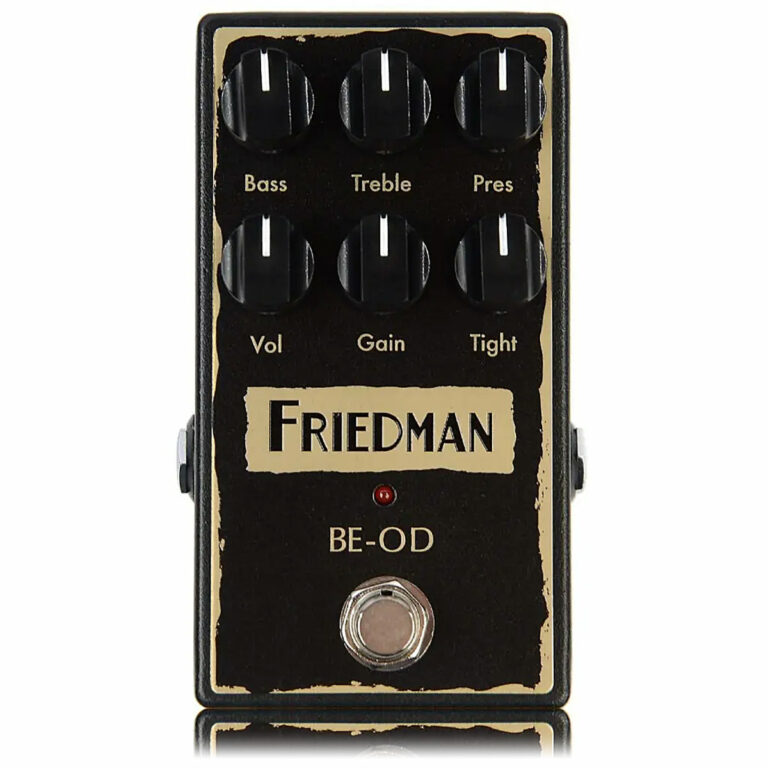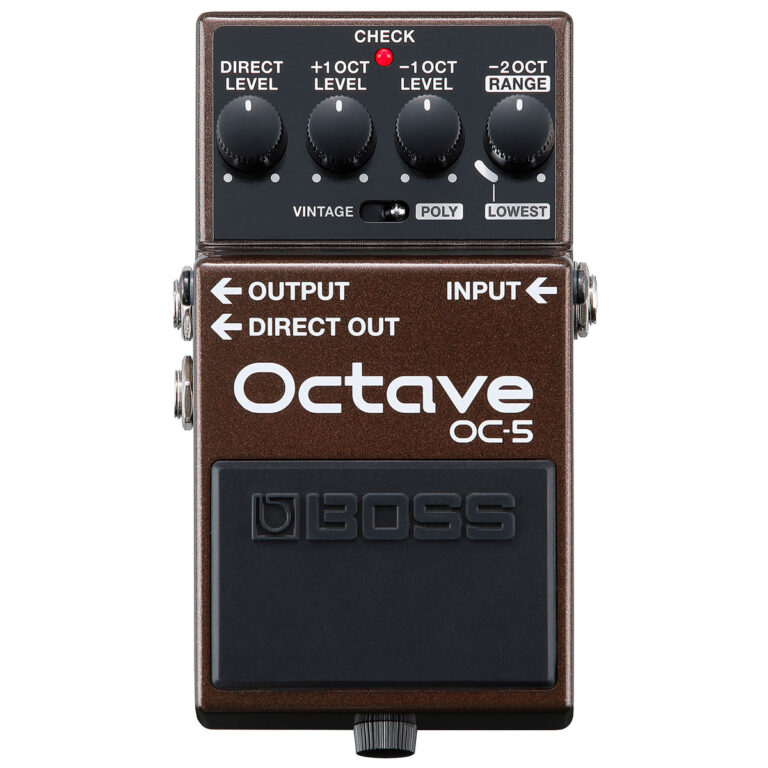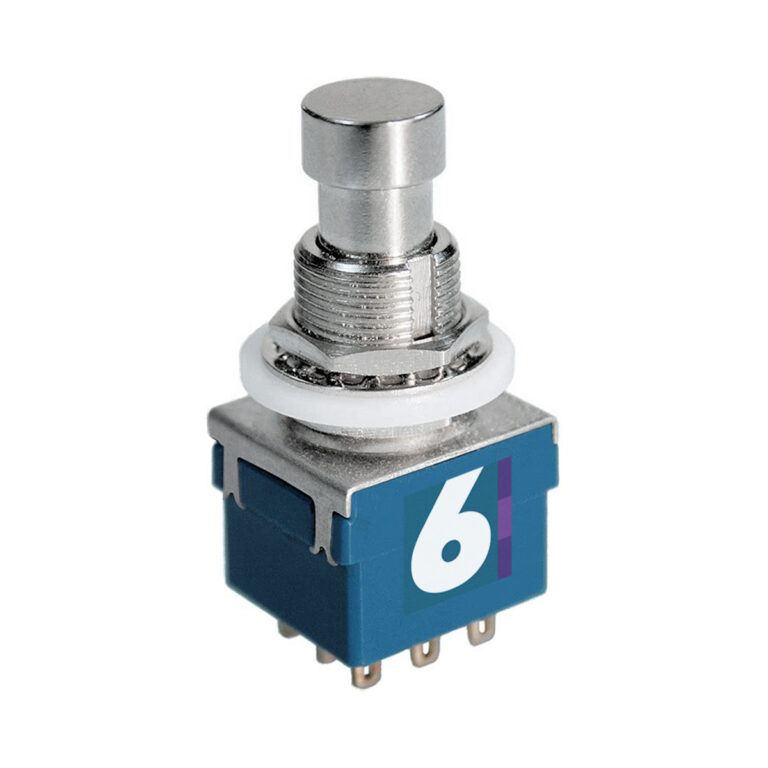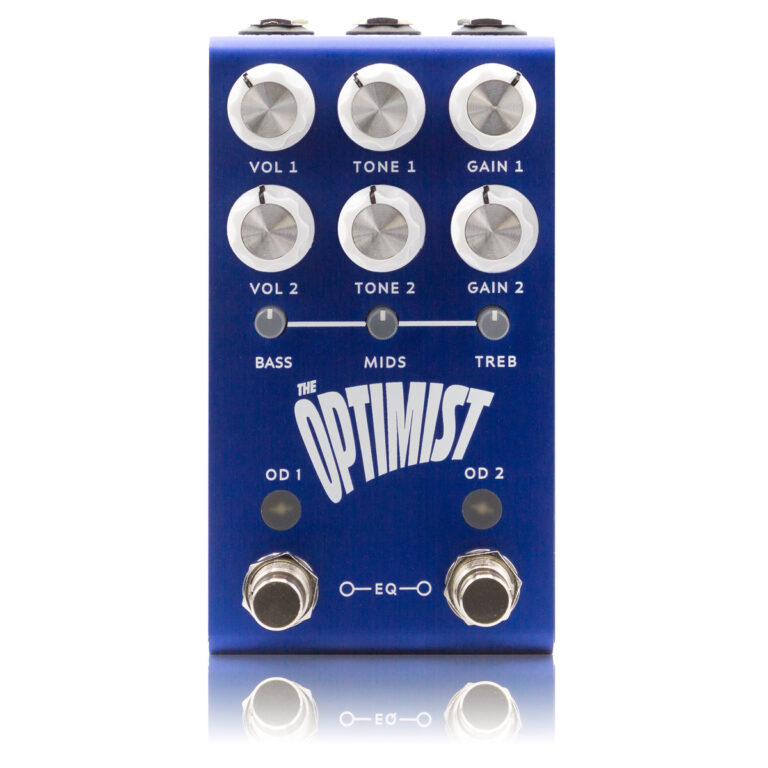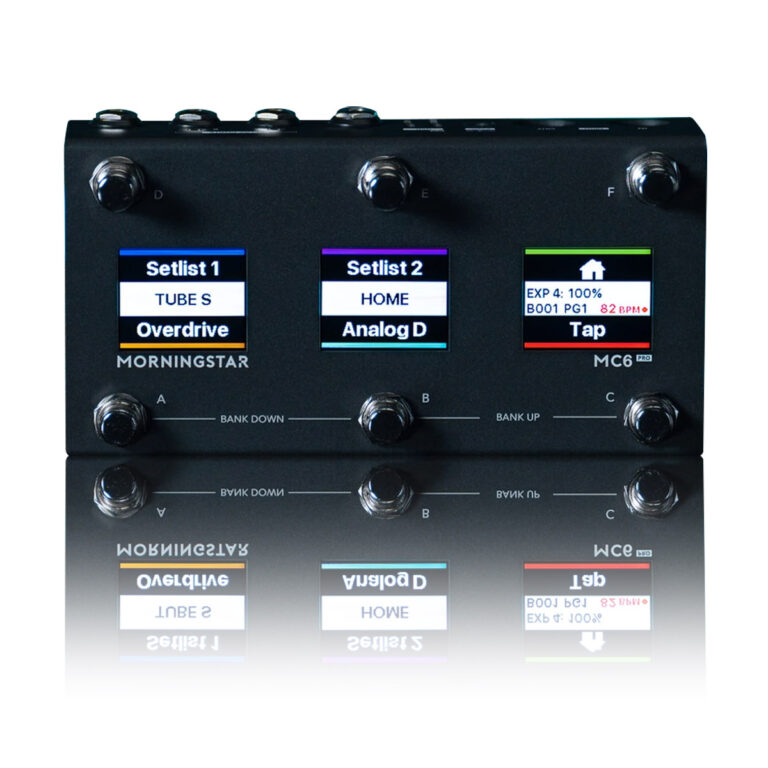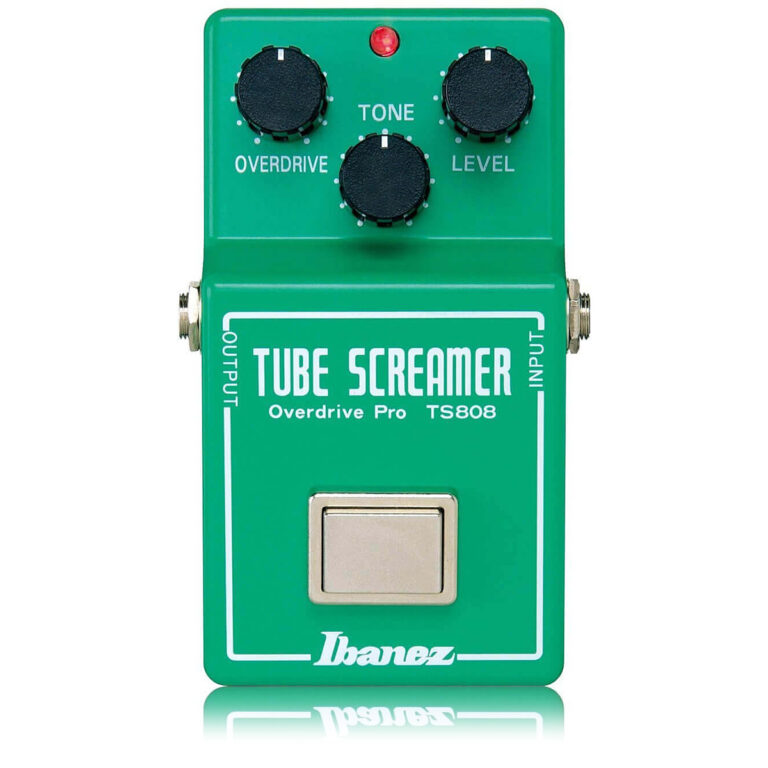My Genuine Take On the Browne Amplification Protein Dual Overdrive
I’d like to unload my brain a little in regards to the Browne Amplification Protein overdrive pedal. I just had a spike of inspiration so I’m going to type before it goes away. Let’s call this a genuine Browne Protein review. I’ve bought both of mine as an average Joe.
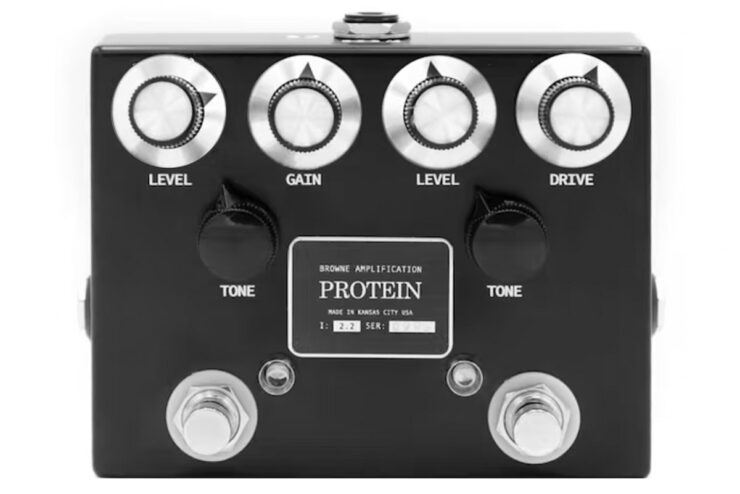
In order to establish some reference, I’ll point out that I’ve had a Browne Amplification Protein ver 2.2 for a little over a year. I like it so much that I recently bought a version 3 with the clickless switches and top mounted jacks but with not real intention to sell my version 2.2 Protein.
I do prefer version 3 because most of my other pedals use soft-switching, so it’s nice to have the same feel throughout my pedalboard. Additionally, while Browne Amplification does specify that the version 3 is a little bigger, in truth it’s really only thicker. The size of the enclosure feels very similar between the two. Plus, given the top mounted jacks, the “bigger” version 3 is still easier to fit on a board. Lastly, I like the finish on the Ver 3 more. It looks and feels better overall.
For the last year I’ve been comparing my Browne Protein dual overdrive versus the following:
- Strymon Sunset
- Strymon Riverside
- Jackson Audio Golden Boy
- Jackson Audio Asabi
- Jackson Audio Broken Arrow V2
- J. Rockett The Dude V2
- J. Rockett Majestic
- J. Rocket The Animal
- Ibanez TS808 True-Bypass Modded
- Earthquake Devices Plumes
- Friedman BE-OD
Out of all those, the Protein is my favorite overdrive, with the J. Rockett The Dude V2 in close second. The Dude can do stuff than none of the others in this list can. It has this very unique sound that I haven’t been able to replicate with anything else. In regards to the BE-OD, I consider that a high gain distortion pedal even through it’s called an overdrive. And finally, I’ll admit that while I prefer the sound of the Protein over the Strymon Sunset and Strymon Riverside, I still hold those pedals in high regard given I run a MIDI rig and the MIDI functionality of those two is something I highly appreciate and use all the time. Furthermore, given the Sunset and Riverside have a bunch more settings available, they can cover more ground than the Protein.
Some things I like about the Browne Protein
There is a certain clarity and note-definition that’s very hard to explain – specially on the blue side. The sound is really airy and open. Super pleasing.
When you compare it to other pedals, you may be enjoying the others just fine, but once you turn any other pedal off and turn on the Protein blue side, you immediately realize, “wow, this sounds better.”
I love the green side as well, but I prefer to run the blue side by itself for clean boost with a slight bit of grit and then punch the green side on top for leads and palm muting rhythm. I rarely run the green side by itself as I love the punch of both channels working together… and I prefer one click changes rather than two. If the blue side is on, I don’t find myself turning the green side on and then clicking again to turn the blue off.
Let me point out that I still prefer the pedal to be like it is in comparison to something like the Friedman BE-OD Deluxe. That one offers single click changes, but it doesn’t allow you to stack both channels. Plus, I feel that any dual overdrive that has a high-gain channel NEEDS to have a soft-clipping side. In the case of the BE-OD Deluxe dual overdrive, the lower gain side is still hard clipping. This means I end up wanting to still run a soft-clipping pedal on my board alongside it.
About the Browne Protein controls and routing
The other thing I really like is the controls. I feel that 3 knobs per channel is ideal for an overdrive pedal… specially when playing live. The reason is, you don’t have to think much. You can just adjust volume, gain and tone and not have to really think, “Do I need more treble? Or is it mids I need?” Mind you, there are instances where that kind of tone shaping is needed. However, in regards to the Protein, I love that there’s a single tone knob for each channel. Simple.
One of these days I’ll run my version 2.2 in two loops of my Morningstar Engineering ML5 loop switcher. If I do that I might be more inclined to run each side independently, such as running the green side by itself, as I can do things like that with a single click rather than two.
The Browne Protein blue side can easily be an always on clean boost. With the volume up past 1-2 o’clock and the gain low, around 9 o’clock it offers a level of punch and clarity for cleans that is addictive and also pairs REALLY well with a good compressor like the Thorpy Fat General or an Origin Effects Cali76.
My plans for both my Protein Ver 2.2 and Version 3.0
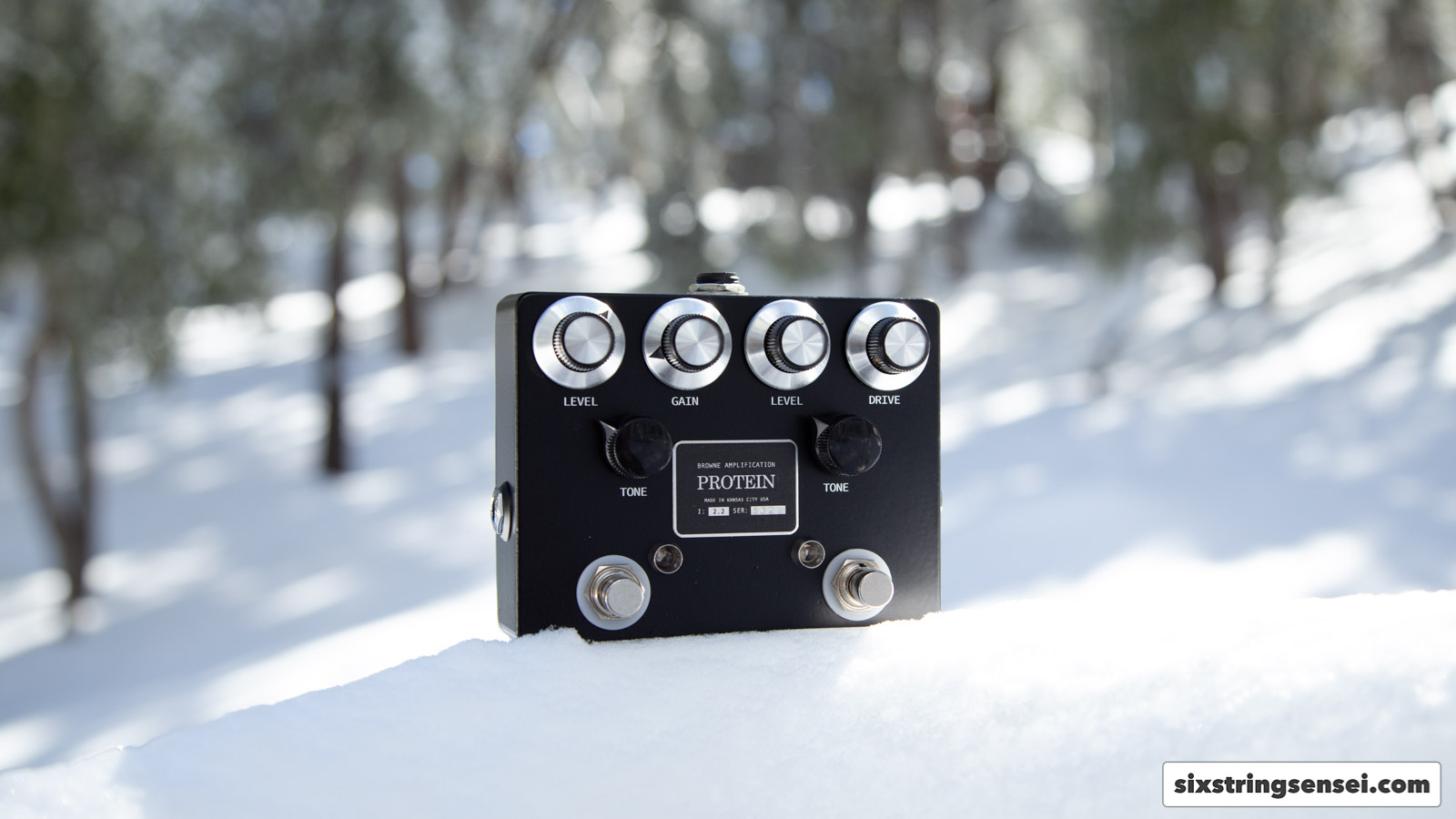
My newer Protein Ver 3 is going on a tiny board after an Origin Effects Cali76 Compact Deluxe Compressor Exclusive Blackout Finish. Of course, the Protein is also black. After that is a Universal Audio UAFX Starlight Delay and a Universal Audio UAFX Golden Reverb. The secret sauce to this board is I have a patch box after the overdrive and the first time-based pedal that allows me to either run the time-based effects in an amp’s effects loop, or I can insert another board so I can run a few modulation effects.
That all said, my Ver 2.2 Browne Protein is going on a mid-size live board I’m working on.
I’ve compared the Browne Protein to a ton of different overdrive pedals over the last year and it’s become one of my very favorites. You can tell a lot of care went not only into the build, but also into the component selection. It’s amazing as a standalone overdrive pedal with enough gain to satisfy all but the metal players when you stack both channels. Plus, if you need metal high gain, you can definitely use the Protein to boost an amp’s high gain pre-amp.

